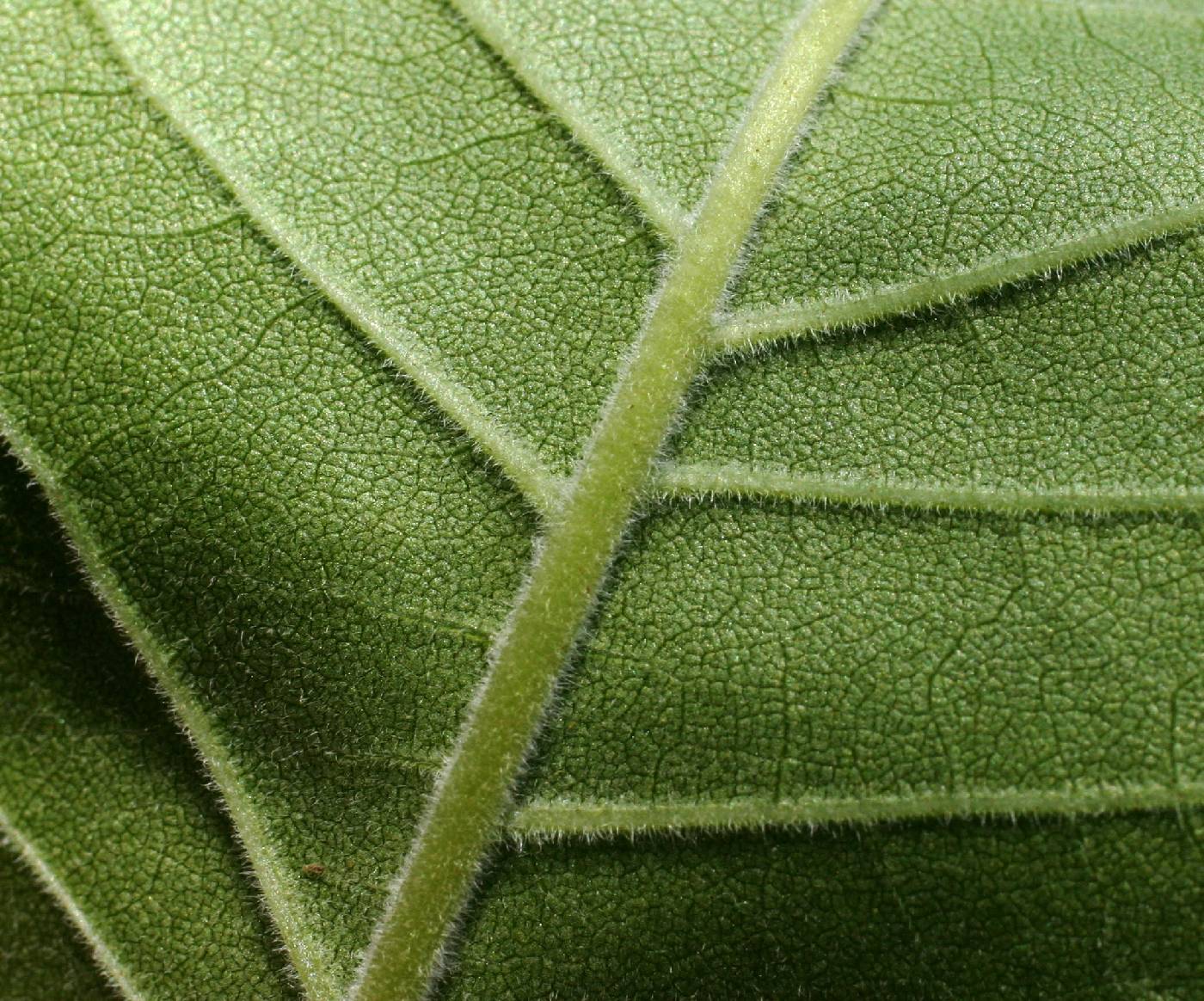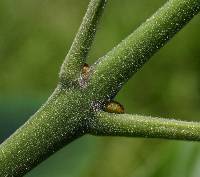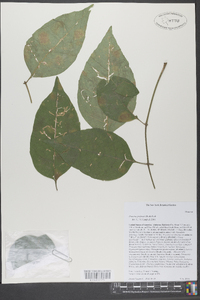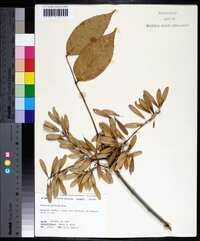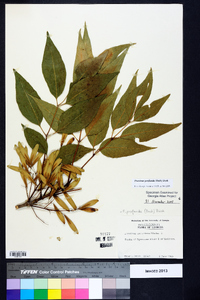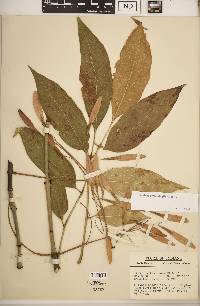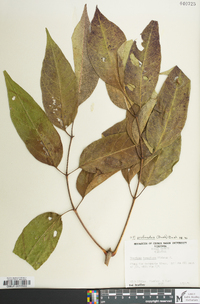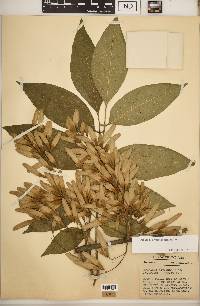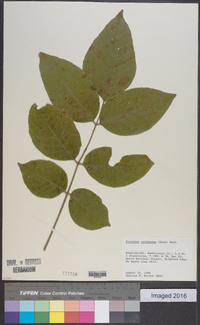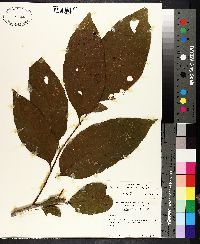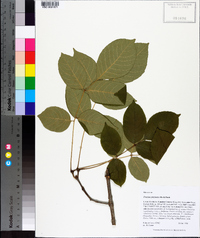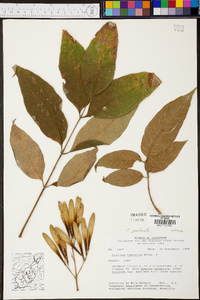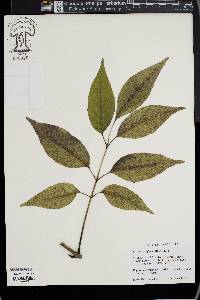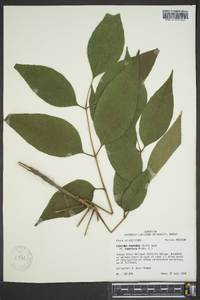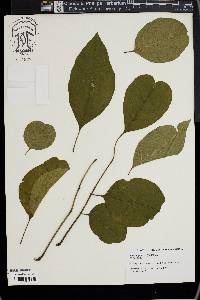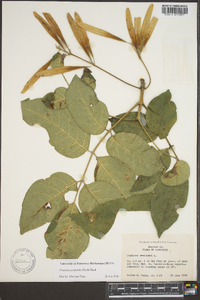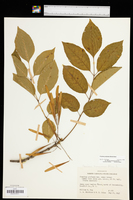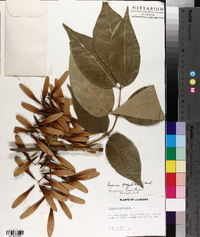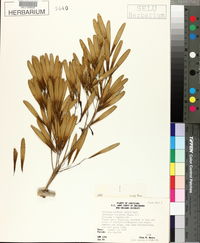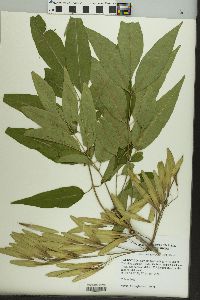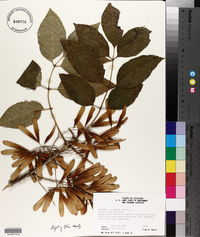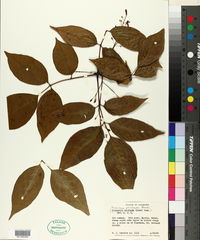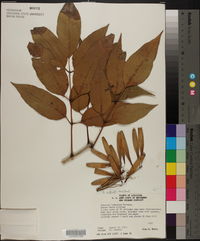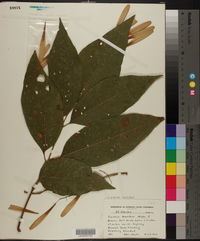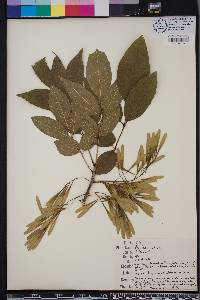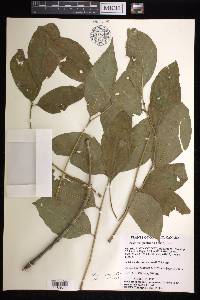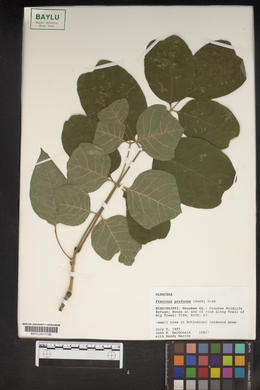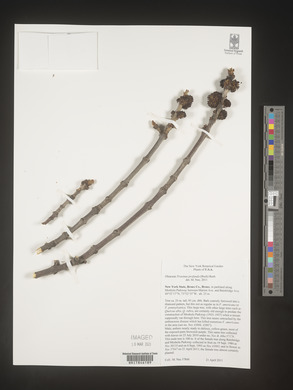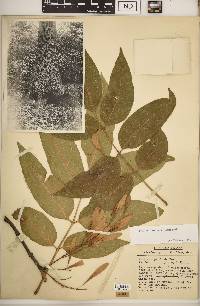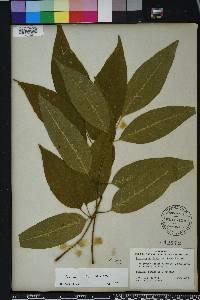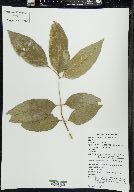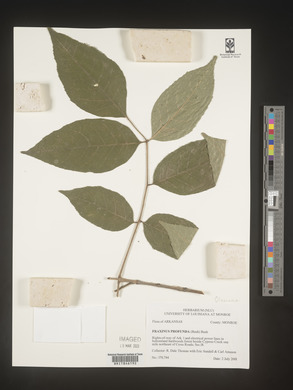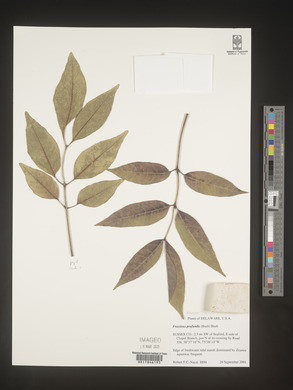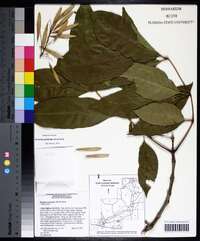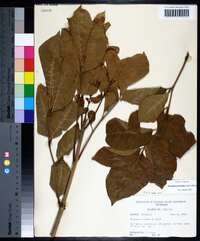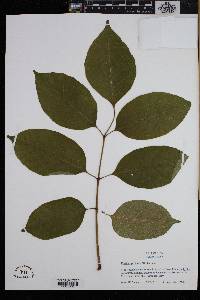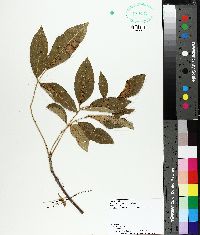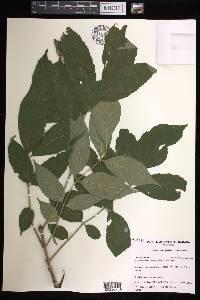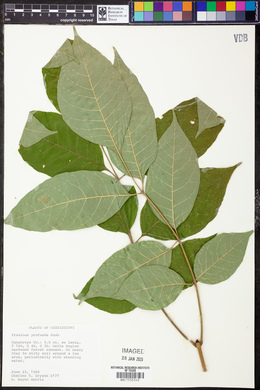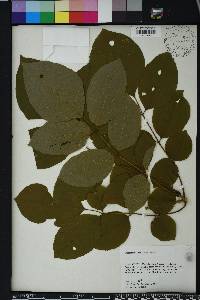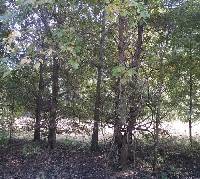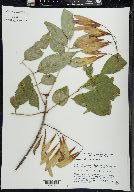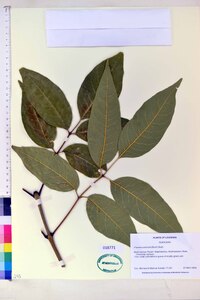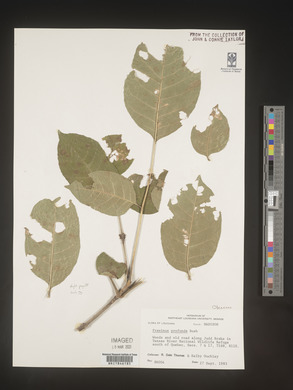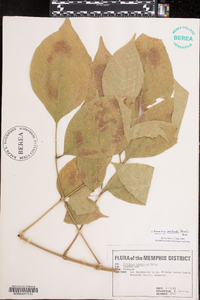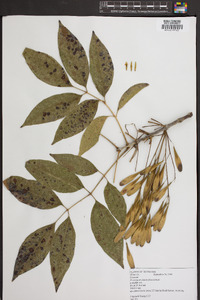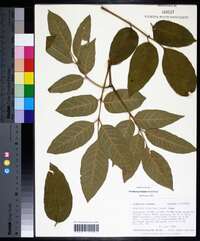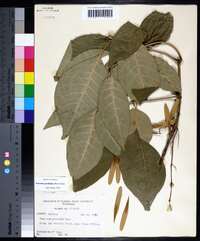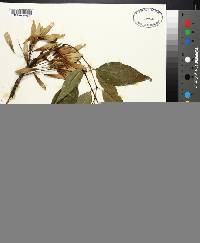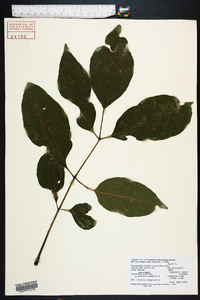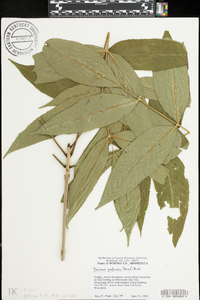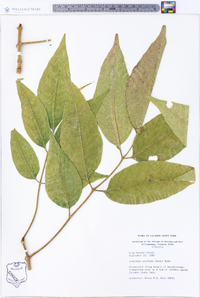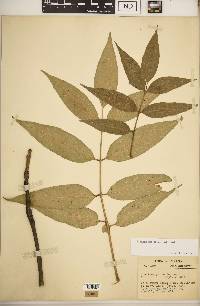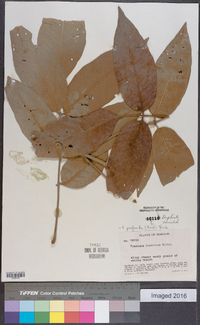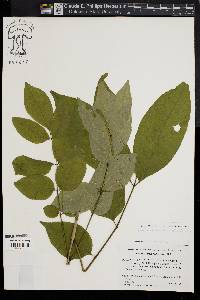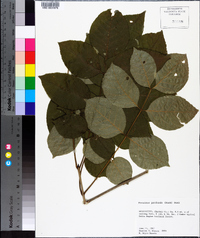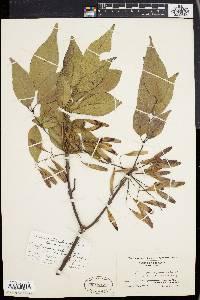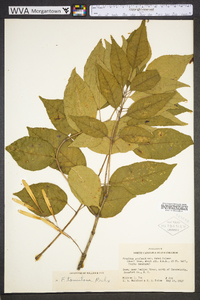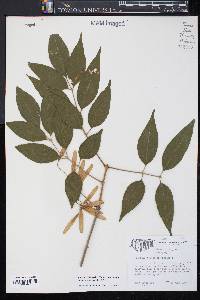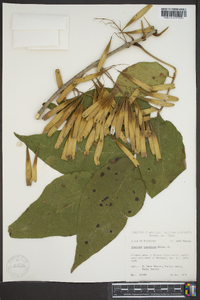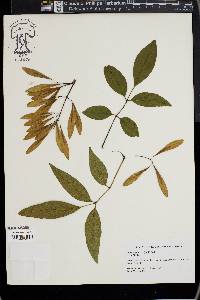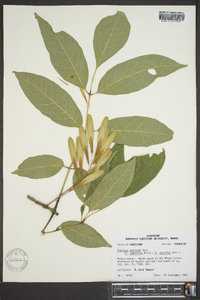
|
|
|
|
Family: Oleaceae
Pumpkin Ash
[Fraxinus americana var. profunda, moreFraxinus profunda var. ashei E.J.Palmer] |
Medium-sized to large tree 12 - 30 m tall, trunk diameter 30 cm - 0.6 m Leaves: opposite, pinnately compound, 25 - 40 cm long, with densely hairy leafstalks and seven to nine leaflets. Leaflets stalked, yellowish green, paler and hairy on the lower surface (especially along midrib), 8 - 20 cm long, 5 - 8 cm wide, lance-shaped to elliptical with a rounded or tapering base and long-pointed tip, sometimes blunt-toothed, thick. Leaves turn yellow in autumn. Flowers: either male or female, found on separate trees (dioecious). The small, greenish purple flowers lack petals and are borne in a downy, branched inflorescence. Fruit: dry, single-seeded, winged (samara), 5 - 8 cm long, oblong, and rounded at the tip. Wing encloses half or more of the seed cavity and often extends to the base. Bark: gray, thick, with diamond-shaped furrows between scaly ridges. Twigs: stout and ashy gray to brown. Current shoots densely hairy (persisting one to three years). Leaf scars are half-circles and deeply notched on top, with several bundle scars forming a U. The surface layer of older twigs not peeling or flaking. Buds: light reddish brown, small, rounded, and slightly hairy. Form: narrow and rounded with stout, spreading branches. Trunk straight or crooked with a swollen, buttressed base. Similar species: The other ash species of the Chicago Region look more or less similar to Fraxinus profunda. Fraxinus americana differs by having short-stalked leaflets with pale or whitish undersides, twigs with raised leaf scars, and a twig surface (except current year's growth) that is flaky, scaly, or peeling. Also, the wing of its fruit does not extend to the base of the large seed cavity. Fraxinus nigra has stalkless leaflets, and the wing of its fruit nearly extends to the base of the flat seed cavity. Fraxinus pennsylvanica sometimes has densely hairy shoots, and its leaves are not as long, wide, or leathery as those of F. profunda. Fraxinus quadrangulata has square twigs, and the wing of its fruit extends to and around the base of the seed cavity. Flowering: April to May, before or with the leaves Habitat and ecology: Mainly occurs in wet bottomland sites. It is known only from Kankakee County, Illinois and Starke and Porter counties in Indiana. The Kankakee County specimen was found in the Momence bottomlands of the Kankakee River. Otherwise, it occurs in the lower Wabash River and Ohio River drainages. In southern Illinois and other parts of its range it occurs in floodplains and swamps. Occurence in the Chicago region: native Notes: The common name of Fraxinus profunda refers to its swollen, pumpkin-like trunk base. Its wood is used for furniture, fuel, boxes, crates, and pulp. The emerald ash borer (Agrilus planipennis) is a serious insect threat to all native ashes (see link below). Etymology: Fraxinus is the Latin word for ash. Profunda is Latin for deep or profound, and refers to the tree's swampy habitat. Author: The Morton Arboretum Tree to 40 m; bark ridged-reticulate as in no. 1 [Fraxinus americana L.]; twigs hairy; lfls 5-9, usually 7, lanceolate to oblong or elliptic, long-acuminate, entire or nearly so, hairy beneath, broadly acute to rounded and often inequilateral, on conspicuous wingless petiolules 8-15 mm; fr linear-oblong to spatulate, 4-7.5 (avg 5.5) cm נ7-12 (avg. 9) mm, the wing extending at least to the middle of the terete body (this mostly more than 2 mm wide); cal subtending the fr 3-4 mm, or short as in no. 2; 2n=138. Swamps and wet woods; irregularly from s. N.J. to Fla. and w. to O., Ind., Ill., Mo., and La. (F. michauxii; F. tomentosa, an illegitimate name) Gleason, Henry A. & Cronquist, Arthur J. 1991. Manual of vascular plants of northeastern United States and adjacent Canada. lxxv + 910 pp. ©The New York Botanical Garden. All rights reserved. Used by permission. From Flora of Indiana (1940) by Charles C. Deam In swamps, ponds, sloughs, and overflow land along streams. Its most constant associates are pecan, red maple, white elm, shellbark hickory, green ash, and cypress. Infrequent to common in its habitat. ...... Indiana Coefficient of Conservatism: C = 8 Wetland Indicator Status: OBL Deam (1932): The wood is similar to white ash but is inferior to that species. On account of its habitat this species was little cut until the past few years when ash became scarce. During the past few years most of the deep river and cypress swamps have been invaded and all of the ash cut. |
|
|
|

